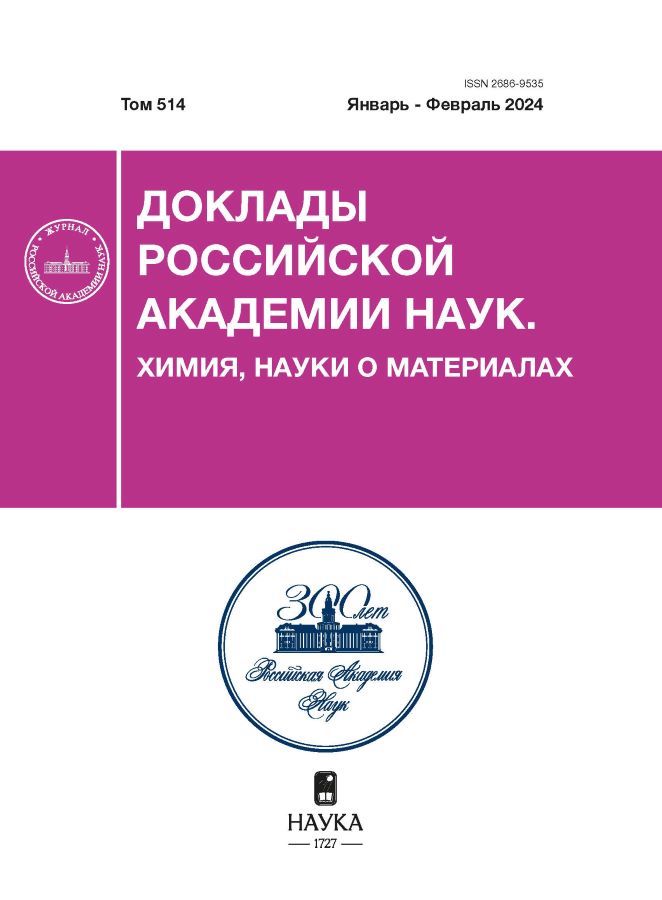Evaluation of toxicity of ionic liquids as solvents in C–C cross-coupling reaction
- Autores: Kolesnikov A.E.1, Egorova K.S.1
-
Afiliações:
- Zelinsky Institute of Organic Chemistry, Russian Academy of Sciences
- Edição: Volume 514, Nº 1 (2024)
- Páginas: 41-49
- Seção: CHEMISTRY
- URL: https://snv63.ru/2686-9535/article/view/651919
- DOI: https://doi.org/10.31857/S2686953524010042
- ID: 651919
Citar
Texto integral
Resumo
In this work, by means of bio-Strips and cytotoxic potentials of chemical reactions, the decisive impact of the solvent choice on the “overall cytotoxicity” of the process is shown by example of 36 routes of 1,1′-biphenyl synthesis.
Palavras-chave
Texto integral
Sobre autores
A. Kolesnikov
Zelinsky Institute of Organic Chemistry, Russian Academy of Sciences
Email: egorova-ks@ioc.ac.ru
Rússia, 119991 Moscow
K. Egorova
Zelinsky Institute of Organic Chemistry, Russian Academy of Sciences
Autor responsável pela correspondência
Email: egorova-ks@ioc.ac.ru
Rússia, 119991 Moscow
Bibliografia
- Welton T. // Chem. Rev. 1999. V. 99. № 8. P. 2071–2084. https://doi .org/10.1021/cr980032t
- Pârvulescu V.I., Hardacre C. // Chem. Rev. 2007. V. 107. № 6. P. 2615–2665. https://doi .org/10.1021/cr050948h
- Hallett J.P., Welton T. // Chem. Rev. 2011. V. 111. № 5. P. 3508–3576. https://doi .org/10.1021/cr1003248
- Fedorov M.V., Kornyshev A.A. // Chem. Rev. 2014. V. 114. № 5. P. 2978–3036. https://doi .org/10.1021/cr400374x
- MacFarlane D.R., Forsyth M., Howlett P.C., Kar M., Passerini S., Pringle J.M., Ohno H., Watanabe M., Yan F., Zheng W., Zhang S., Zhang J. // Nat. Rev. Mater. 2016. V. 1. № 2. P. 15005. https://doi .org/10.1038/natrevmats.2015.5
- Azov V A., Egorova K.S., Seitkalieva M.M., Kashin A.S., Ananikov V.P. // Chem. Soc. Rev. 2018. V. 47. № 4. P. 1250–1284. https://doi .org/10.1039/c7cs00547d
- Itoh T. // Chem. Rev. 2017. V. 117. № 15. P. 10567–10607. https://doi .org/10.1021/acs.chemrev.7b00158
- Ventura S.P.M., e Silva F.A., Quental M.V., Mondal D., Freire M.G., Coutinho J.A.P. // Chem. Rev. 2017. V. 117. № 10. P. 6984–7052. https://doi .org/10.1021/acs.chemrev.6b00550
- Egorova K.S., Gordeev E.G., Ananikov V.P. // Chem. Rev. 2017. V. 117. № 10. P. 7132–7189. https://doi .org/10.1021/acs.chemrev.6b00562
- Egorova K.S., Posvyatenko A.V., Larin S.S., Ananikov V.P. // Nucleic Acids Res. 2021. V. 49. № 3. P. 1201–1234. https://doi .org/10.1093/nar/gkaa1280
- Hayes R., Warr G.G., Atkin R. // Chem. Rev. 2015. V. 115. № 13. P. 6357–6426. https://doi .org/10.1021/cr500411q
- Dupont J., Consorti C.S., Spencer J. // J. Braz. Chem. Soc. 2000. V. 11. № 4. P. 337–344. https://doi .org/10.1590/s0103-50532000000400002
- Wasserscheid P., Keim W. // Angew. Chem., Int. Ed. 2000. V. 39. № 21. P. 3772–3789. https://doi .org/10.1002/1521-3773(20001103) 39:21<3772::aid-anie3772>3.0.co;2-5
- Egorova K.S., Ananikov V.P. // ChemSusChem 2014. V. 7. № 2. P. 336–360. https://doi .org/10.1002/cssc.201300459
- Heckenbach M.E., Romero F.N., Green M.D., Halden R.U. // Chemosphere. 2016. V. 150. P. 266–274. https://doi .org/10.1016/j.chemosphere.2016.02.029
- Egorova K.S., Galushko A.S., Ananikov V.P. // Angew. Chem., Int. Ed. 2020. V. 59. № 50. P. 22296–22305. https://doi.org/10.1002/anie.202003082
- Egorova K.S., Galushko A.S., Dzhemileva L.U., D’yakonov V.A., Ananikov V.P. // Green Chem. 2021. V. 23. № 17. P. 6373–6391. https://doi .org/10.1039/d1gc00207d
- Egorova K.S., Posvyatenko A.V., Galushko A.S., Ananikov V.P. // Chemosphere. 2023. V. 313. № P. 137378. https://doi .org/10.1016/j.chemosphere.2022.137378
- Egorova K.S., Galushko A.S., Dzhemileva L.U., D’yakonov V.A., Ananikov V.P. // Dokl. Chem. 2022. V. 504. № 2. P. 106–117. https://doi .org/10.1134/s0012500822600080
- Dzhemileva L.U., D’Yakonov V.A., Seitkalieva M.M., Kulikovskaya N.S., Egorova K.S., Ananikov V.P. // Green Chem. 2021. V. 23. № 17. P. 6414–6430. https://doi.org/10.1039/d1gc01520f
Arquivos suplementares
Arquivos suplementares
Ação
1.
JATS XML
2.
Fig. 1. Biostrips for the reaction of synthesis of 1,1'-biphenyl from phenyl halide and phenylboronic acid with a variation of phenyl halide (iodobenzene (A), brombenzene (B)), catalyst (PdCl2 (A), PdBr2 (B), PdI2 (C)) and solvents ( ethanol (A), NMP (B), C2MIm NTf2 (C), C4MIm BF4 (D), C4MIm NTf2 (E), Chol NTf2 (F)). The reaction is shown at the top, the relative cytotoxicity scale and the explanation of abbreviations are at the bottom. For clarity, only three synthesis methods are shown. Cytotoxicity data obtained on HEK293 cells were used.
Baixar (831KB)
3.
Fig. 2. Biostrips of 36 methods for the synthesis of 1,1'-biphenyl (based on cytotoxicity data on HEK293 cells). The first, second and third letters in the names of reactions indicate the type of starting substance 2 (SM2: iodobenzene (A), bromine- benzene (B)), catalyst (CT: PdCl2 (A), PdBr2 (B), PdI2 (C)) and solvent (S: ethanol (A), NMP (B), C2MIm NTf2 (C), C4MIm BF4 (D), C4MIm NTf2 (E), Chol NTf2 (F)), respectively.
Baixar (745KB)
4.
Fig. 3. Biostrips of 36 methods for the synthesis of 1,1'-biphenyl (based on cytotoxicity data on A549 cells). The first, second and third letters in the names of the reactions indicate the type of starting substance 2 (SM2: iodobenzene (A), brombenzene (B)), catalyst (CT: PdCl2 (A), PdBr2 (B), PdI2 (C)) and solvent (S: ethanol (A), NMP (B), C2MIm NTf2 (C), C4MIm BF4 (D), C4MIm NTf2 (E), Chol NTf2 (F)) respectively.
Baixar (681KB)
5.
Fig. 4. Cytotoxic potentials for 36 methods of obtaining 1,1'-biphenyl. The exact values are given in Table 1. CPi is the initial cytotoxic potential; CPf is the final cytotoxic potential; CPf_rel is the relative secondary cytotoxic potential.
Baixar (557KB)
6.
Fig. 5. Comparison of the values of the 24-hour CC50 components of the studied reactions for the HEK293 and A549 cell lines. The color of the cells of the heat map corresponds to the values of CC50 for this cell line (see the legend at the bottom of the figure; the colors correspond to the distribution of CC50 values by percentiles).
Baixar (559KB)















